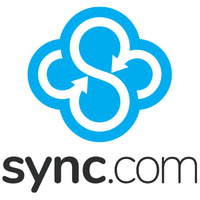Best file transfer software of 2025
Make your files easier to access online

We list the best file transfer software, to make it simple and easy to make your files easier to access online when you want to share them.
The ability to share and transfer files has become increasingly important for businesses. This is especially since remote working has become established, as online sharing of documents has become the norm with collaboration now essential for a lot of business tasks, such as for team editing of documents, spreadsheet, and presentations.
Cloud document storage has become an integral part of all this, but do note that not all cloud services allow for direct sharing of data with other users.
Luckily, there are a number of providers who do allow you to share files online and transfer data, giving you full control with regards to what and how you share. This means being able to set permissions to files and folders according to whether you wish to keep them private, allow read-only access, or of course allow full access for sharing and collaborative working.
We've compared these file transfer options on aspects like their storage limits, interface, ease of signup, security encryption, and individual file-size sharing limits. We also considered their free plans and the value of their pricing plans, among other things.
Below we list the best files transfer software services currently available.
Read more on the best ways to share big files.
Limited Time: 50% Off Private Cloud Storage
Sync's encrypted cloud ensures your data is for your eyes only. Use Tech Radar’s exclusive 50% Off deal to get 200GB of private cloud storage for only $2.50 per month. If you have more to store, get Sync's 2TB promo or grab their Unlimited Plan. Sync makes cloud storage and file sharing simple and secure.
FREE Backblaze unlimited cloud storage with every ExpressVPN purchase
ExpressVPN, TechRadar's #1 VPN provider, is offering free unlimited cloud storage courtesy of Backblaze for a whole year when you sign up for an annual VPN subscription. Transferring files online is even easier when you've already uploaded them to the cloud with Backblaze.
The best files transfer software of 2025 in full:
Why you can trust TechRadar
Best file transfer software for collaboration
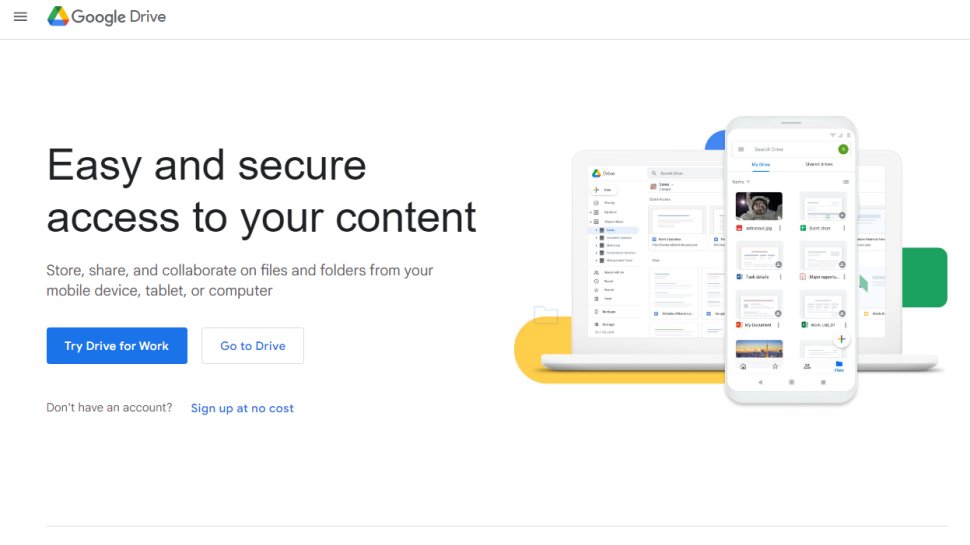
Reasons to buy
Reasons to avoid
Even the staunchest Apple or Microsoft fan would have to admit Google does the web stuff rather well, and Google Drive runs Dropbox very close in terms of sharing files - which one is best for you could well depend on which one you already spend more of your time in.
Files can be shared via email or link in seconds, though you don't get any time limit or password options in this case. What you can do is limit the edits that the file recipients can make: as you'd expect, it's perfect for sharing files from Google Docs, Sheets and Slides.
As with Dropbox, you can access Google Drive from just about every mobile and desktop platform out there. Users get 15GB for free across Drive and other services like Gmail, but if you need more, you'll need to upgrade your storage.
For more information, read our full Google Drive review.
Best file transfer software for sharing
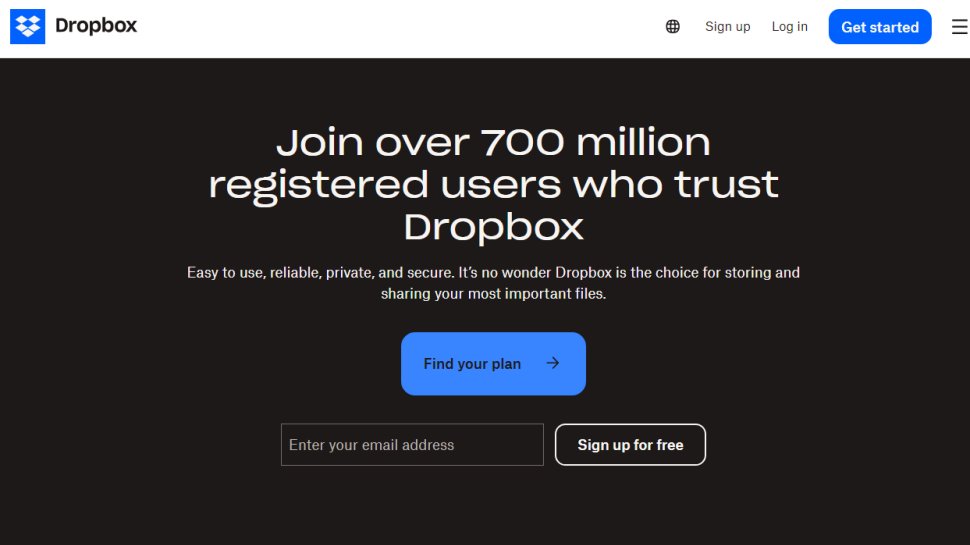
Reasons to buy
Reasons to avoid
Even as the likes of Google, Apple and Microsoft have rolled out their own file syncing and cloud storage services, Dropbox (which has been going since 2007) remains the leader of the pack: it's slick, it's easy to use, it's reliable, and it works on just about any platform.
Files can be shared via a URL with a couple of clicks or taps from Android, iOS, Windows, macOS, Linux and the web, and time limits and password protection can be applied too. At the other end, the recipients can download files with or without a Dropbox account.
Maybe the only mark we can put against Dropbox is that you only get 2GB of storage for free. If you need more storage, individual and family plans are available, as well as business team plans, with annual payment discounts available.
To find out more, see our full Dropbox review.
Best file transfer software for speed

3. WeTransfer
Reasons to buy
Reasons to avoid
If you want something quick and convenient that's not tied to a bigger platform (like Dropbox or Google Drive), give WeTransfer a try. You don't even need to register an account, though you do need to supply an email address you can be contacted on.
Just pick your file (or files), enter the recipient's email address, and you're good to go – it's hard to beat in terms of simplicity. You can email or copy the link to the files, and the link stays active for a week. WeTransfer apps for Android and iOS are available, if needed.
All that is free, but with a Plus account you can set time limits for your downloads, password-protect your files, change the look of the share screen, and more.
WeTransfer's customer support is prompt in its response. Although there's a three-business-day guarantee, you'll likely receive a response much sooner than that.
Best file transfer software lightweight
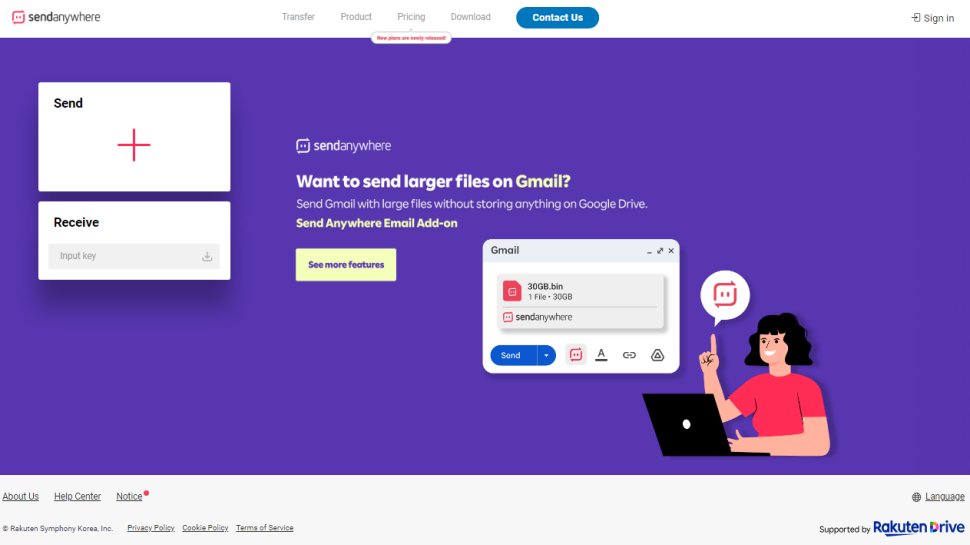
4. Send Anywhere
Reasons to buy
Reasons to avoid
Send Anywhere offers up an even more lightweight interface than WeTransfer, so you can dive right in without any distractions or setup screens to work through. Despite the simple setup, you've got a variety of different file-sharing options to pick from as you go along.
Add files from the opening splash screen, and you can send them direct (through the site via a code), via a URL link, or via email. If you don't want to work with Send Anywhere through the web, you can install dedicated apps for Windows, macOS, Android and iOS.
Free of charge, Send Anywhere will let you easily share files up to 10GB in size, with the link active for 48 hours. However, for the Plus account you get 1TB of storage and can share files up to 50GB in size, track and limit downloads, and remove the ads.
Best simple file transfer software
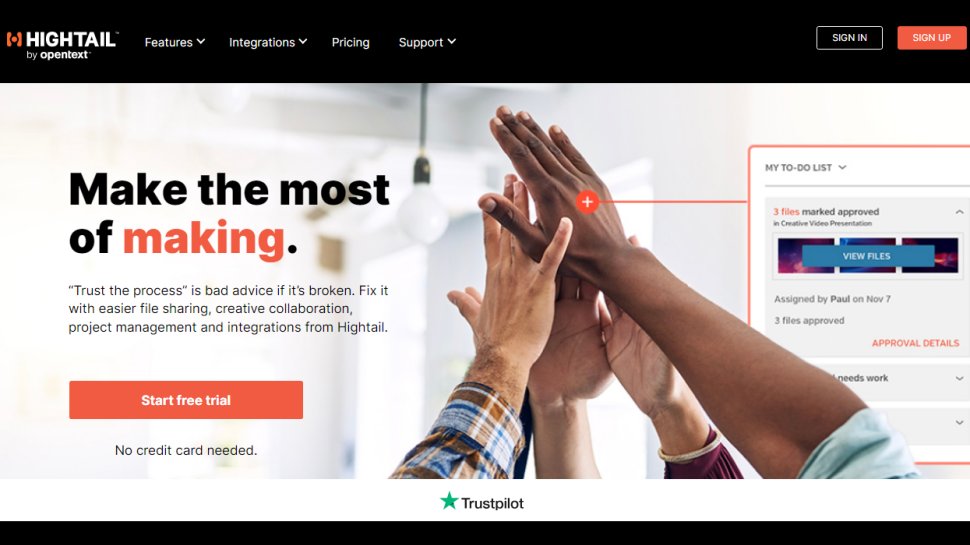
5. Hightail
Reasons to buy
Reasons to avoid
Hightail is a professional-level file collaboration service but there is a file transfer component that's easy to dip in and out of, even if you don't use everything else on the platform. It works straight from the web – you can just drag and drop your files into it.
There is a rather stingy 100MB file size limit in place, but the service is quick and simple and fast Your contacts get a URL they can click on to access the file or files you've selected, and there is no need to register an account at any stage. The files are available for seven days.
There is plenty more to Hightail, which you can get with a paid account, such as larger file sharing (individual file limit of 25GB), advanced collaboration options, and unlimited storage.
Best file transfer software for comms
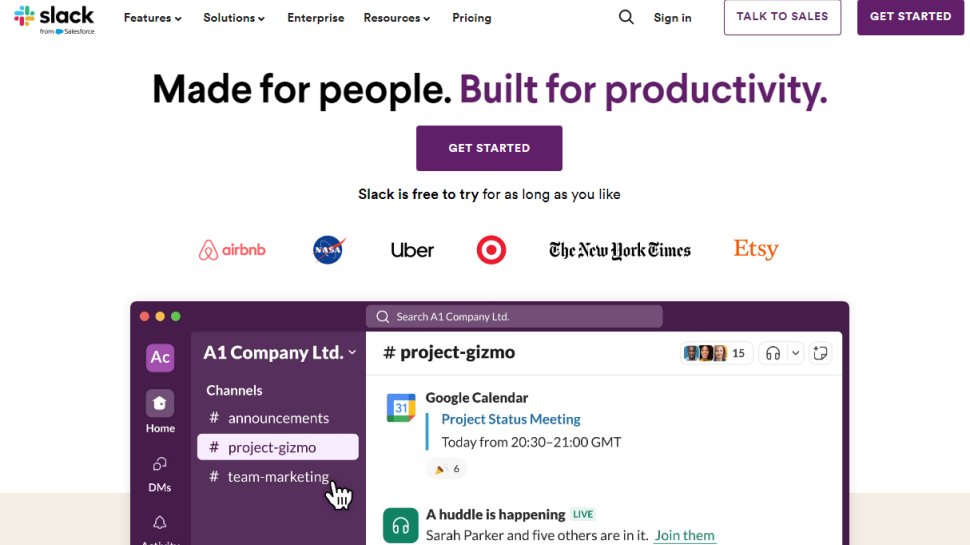
Reasons to buy
Reasons to avoid
Slack isn't so much of an online file store as much as an online communications platform. However, if you're looking to share a select few documents rather than a huge archive then Slack might just work for you.
This is especially the case if you're managing a project, or working as part of a team on a project, and need to keep all your documentation in one place.
This is easy to set up in Slack, and better still, ensure control over which team members have access over which documents.
This provides an advantage over general file-sharing services, because it allows for much more user control - and especially respect hierarchies - without having to worry about overcomplicated permissions.
Even better is that Slack has a free tier with a generous 5GB of storage available per team member, so you can try it out with minimal investment other than a little time spent setting up your team(s). Paid-for plans allow for phone and video conferencing on top of messaging, with increases to member storage.
Read our full Slack review.
We've also featured the best cloud storage.
Best file transfer software FAQs
What is file transfer software?
File transfer software is a tool that facilitates the sharing of files from one device to another using the internet.
These applications are used frequently by internet users across the world, and they come with their own storage, file-size limits, and file-sharing features.
How to choose the best files transfer software for you?
When deciding which files transfer software to use, first consider what your actual needs are, as sometimes free and budget software may only provide basic tools and saving options, so if you need to use advanced features you may find a paid platform is much more worthwhile.
You'll want to check how much storage the file-sharing app offers, the individual file size limits, security encryption, and the overall ease of use.
Additionally, higher-end software can really cater for every need, so do ensure you have a good idea of which features you think you may require from your files transfer software.
How we tested the best file transfer software
To test for the best files transfer software we first set up an account with the relevant software platform. We then tested the service to see how the software could be used with different files and folders, from different devices, in different situations.
We assessed their file-sharing features, limitations, security, and customer support.
The aim was to push each files transfer platform to see how useful its basic tools were and also how easy it was to get to grips with any more advanced tools.
Read how we test, rate, and review products on TechRadar.
Get in touch
- Want to find out about commercial or marketing opportunities? Click here
- Out of date info, errors, complaints or broken links? Give us a nudge
- Got a suggestion for a product or service provider? Message us directly
- You've reached the end of the page. Jump back up to the top ^
Are you a pro? Subscribe to our newsletter
Sign up to the TechRadar Pro newsletter to get all the top news, opinion, features and guidance your business needs to succeed!

Dave is a freelance tech journalist who has been writing about gadgets, apps and the web for more than two decades. Based out of Stockport, England, on TechRadar you'll find him covering news, features and reviews, particularly for phones, tablets and wearables. Working to ensure our breaking news coverage is the best in the business over weekends, David also has bylines at Gizmodo, T3, PopSci and a few other places besides, as well as being many years editing the likes of PC Explorer and The Hardware Handbook.
